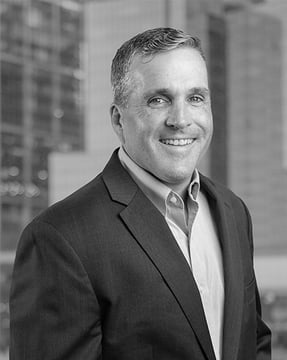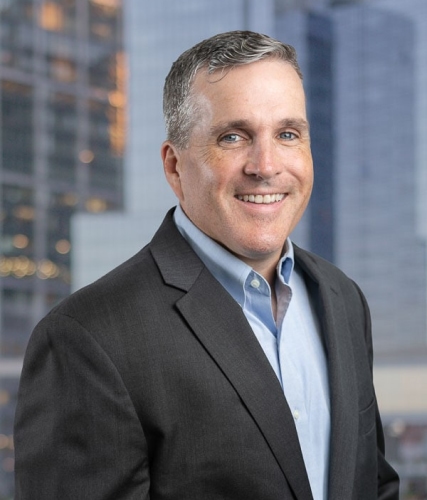
Like many families, HGTV provides the background noise in our home. Recently, when casting a side glance at the TV, all I could see was the bright colors of A Very Brady Renovation, a nonstop advertisement in the corner of the screen for one of HGTV’s most expensive projects yet.
Here’s the premise: HGTV purchased the original Brady Bunch house and embarked on a large-scale project to blend the home used for the iconic external shots from the early 1970s TV show with an exact replica of the interior rooms carefully crafted in studio for the original program. Throw in the Brady kids and a host of HGTV celebrity designers–sign me up. This sounds like a perfect mashup of all that’s right and wrong with reality TV.
In addition to a weakness for pop culture, I am also inflicted with the consultant’s curse (self-diagnosed), so I can’t just enjoy this program as the simple guilty pleasure it should be. No, everything I see somehow needs to be viewed in the context of my work and my client’s business challenges. A Very Brady Renovation certainly was not to be the first exception. So, what exactly was there to be learned from this kitsch-filled romp down memory lane? Turns out, a fair amount. Read on for Brady-inspired insight on defining project goals, maximizing resources, and significantly increasing the probability of project success.
Renovation
What’s the goal—replication or transformation?
Often the renovation projects on HGTV are truly transformative efforts, like the large operating and technology model design initiatives Citisoft partners with our clients to deliver. This Brady project, however large and complex, was more replication than transformation. The overarching principle of the project was to recreate the original Brady house in all its psychedelic grandeur. The nostalgia inherent in the effort and restoring back to the fondly recollected past is great for TV, but in investment management operations and technology we must guardrail against this reversion to the past, or perceived norm, infiltrating our clients’ transformation efforts.
Many clients brand their renovation efforts with a buzzword—redesign, digitalization, or transformation (this one might have legs—see Transformation: Trend or Timeless?). But often they are merely masking their initial objectives, “Legacy System x–Replacement”, with a preconceived solution in mind—newer technology that does exactly what system “x” does. However, true transformation with a material return on investment, occurs not from swapping system “x” with system “y” (or service provider “z”), but when the firm’s goals and underlying requirements are truly understood—and the hybrid operating and technology models that are available today align to create an optimal operating environment for their firm.
Defining the best-fit model takes a significant effort, and true transformation is never achieved with simply modernizing a version of the past. Maybe those dangling beads blocking the way to Greg’s attic room fit the bill for a teenager in 1972, (just like system “x” when you were an equity only fund shop). In 2019, however, French doors may be a better choice for a middle-aged mancave. Just as a tightly integrated, hybrid service provider/cloud application operating model may be the best solution for the mature multi-asset, multi-channel investment manager you’ve become. But where do we put the private market assets? Hint: not in Tiger’s doghouse.
The Cast
Do we have the right players in the correct roles?
A Very Brady Renovation brings together the cast of the original show—actors who played all 6 Brady children and the erstwhile residents of the original Brady house, with external design experts from a host of HGTV programs including sibling teams from Property Brothers and Restored by the Fords. On the show, the Brady kids work with designers to recreate the original house—a great collection of talent, making for a fun (and successful) project. The kids’ internal subject matter expertise helps to define their desired end state and the external design experts deliver exactly what the kids ask for. This seems like a perfect match! Or is it? The HGTV design experts thrive on taking client requirements and using their experience and expertise to deliver results that often exceed client expectations. In this case, the clients set the bar and the HGTV team merely meets it.
On a large transformation program, the program structure is critical—defining roles and responsibilities and assigning the correct resource to each role. The internal subject matter experts define the goals and requirements of the client organization as well as sharing the ins and outs of the organizational DNA. Both are of critical importance to delivering an operating model that meets requirements and is also achievable for the client. But clients must resist the temptation to “lead the witness,” and allow external experts (consultants, vendors, service providers) to share their knowledge of available industry solutions to match internal requirements and culture. This triangulation of business goals, firm ethos, and industry expertise allows for the formulation of a truly transformed, yet achievable target state.
Connect the Polka Dots?
A bunch of rooms do not necessarily make a house
The Brady house renovation was really a series of room redos. All-star teams were formed to renovate each room: Peter and Jan teaming up with the Fords to renovate the kitchen and family room, while Marsha and Cindy joined the Property Brothers to transform the heart of the house, including the famous staircase. The teams all did a wonderful job with their individual rooms/projects—well-formed teams broke off to execute their room design plans with defined roles, clear direction, and strong execution. But ultimately this was a complete home renovation, and it was a bit difficult to see how the rooms flowed together.
Just like a home renovation, an investment manager’s operating model transformation program is a collection of projects. Unlike the Brady project, the most successful transformational programs tightly integrate the projects through holistic solution design and strong overall program governance. Each project/workstream needs to have its own well-formed team but must also drive toward the overall solution within the framework of fully integrated program execution.
Can different teams, different rooms, different projects/workstreams come together to integrate like the 1970s Brady House? Don’t forget that without an integrated vision, the total (i.e., new operating model) may not equal more than the sum of its parts. What happens when the door opens? Are the two distinct room designs (or systems/processes/data models) aligned? Or do they clash horribly?
Keeping Up with the Bradys
Unlike the Brady renovation, successful investment operations transformation efforts don’t start with the solution. Asset managers who capitalize on their efforts share common traits: they clearly articulate business goals, thoroughly define core requirements, understand their corporate culture, avoid retrofitting around sacred cows (or horse statues), and leverage the collective wisdom of internal and external subject matter experts to design and deliver the best operating model for their organization—highlighted by enhanced capabilities that are readily adopted by all.









Comments